Abstract
A new, sensitive and quantitative technique for the routine estimation of immune complexes has been devised. The assay involved the binding of immune complexes to Clq linked to the surface of plastic tubes; the amount of immune complex bound is then determined by adding radiolabelled anti-human IgG. Immune complexes were detected in twelve out of thirty-one patients with systemic lupus erythematosus. The test should prove useful in the diagnosis of immune complex diseases and will be valuable in the evaluation of disease activity.
Full text
PDF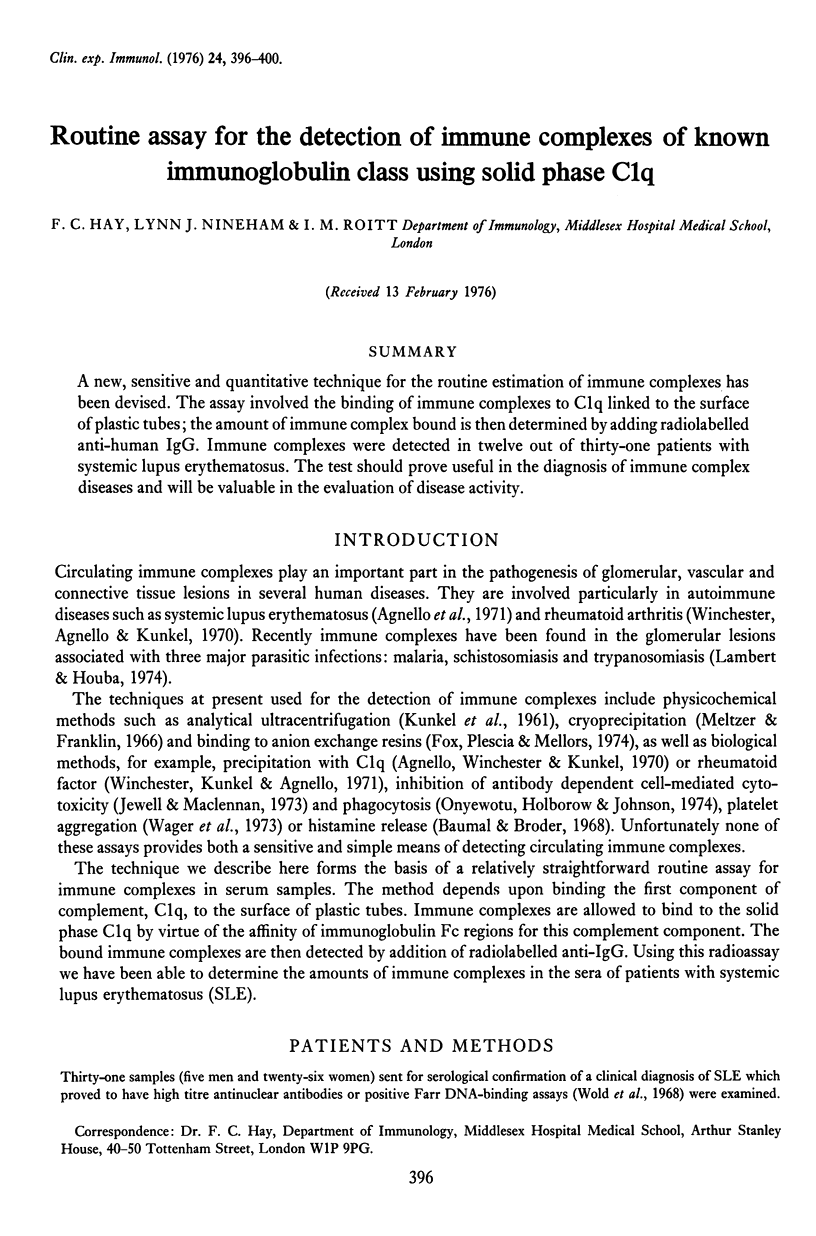
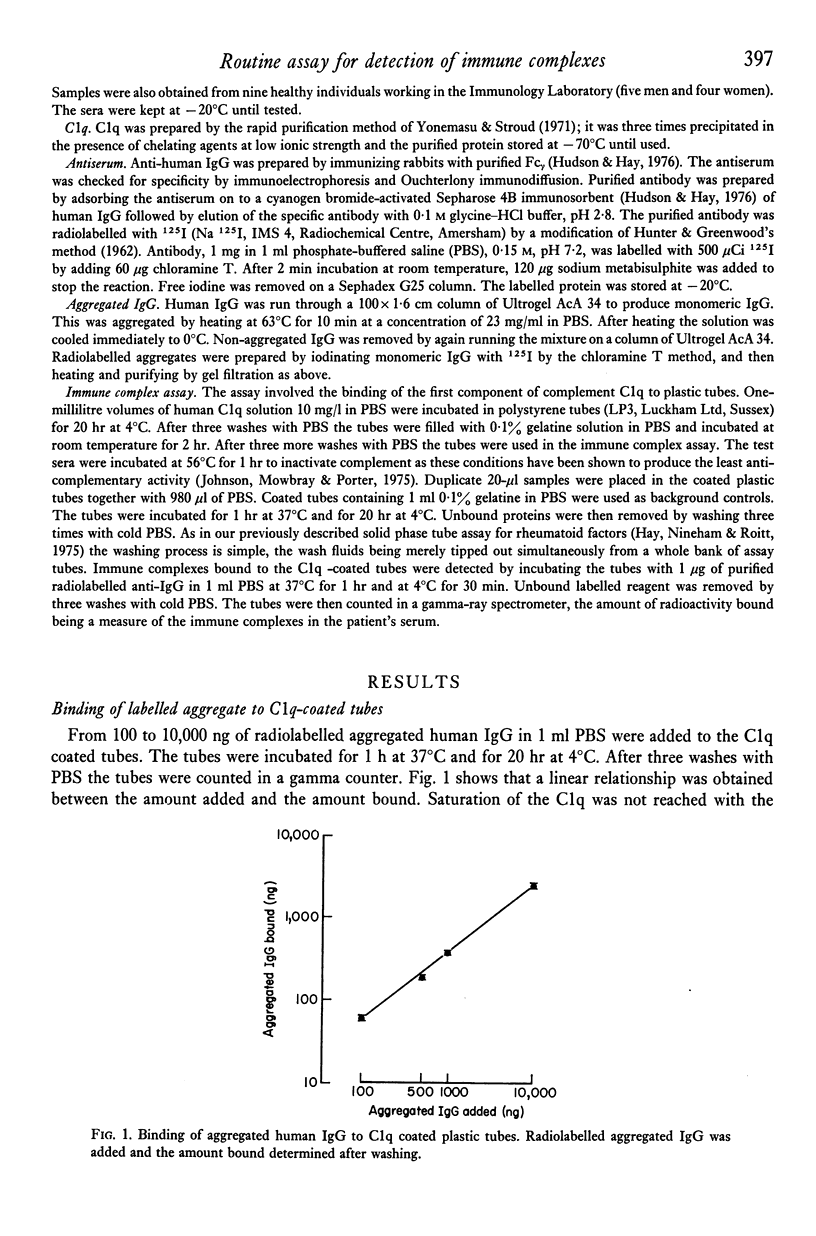
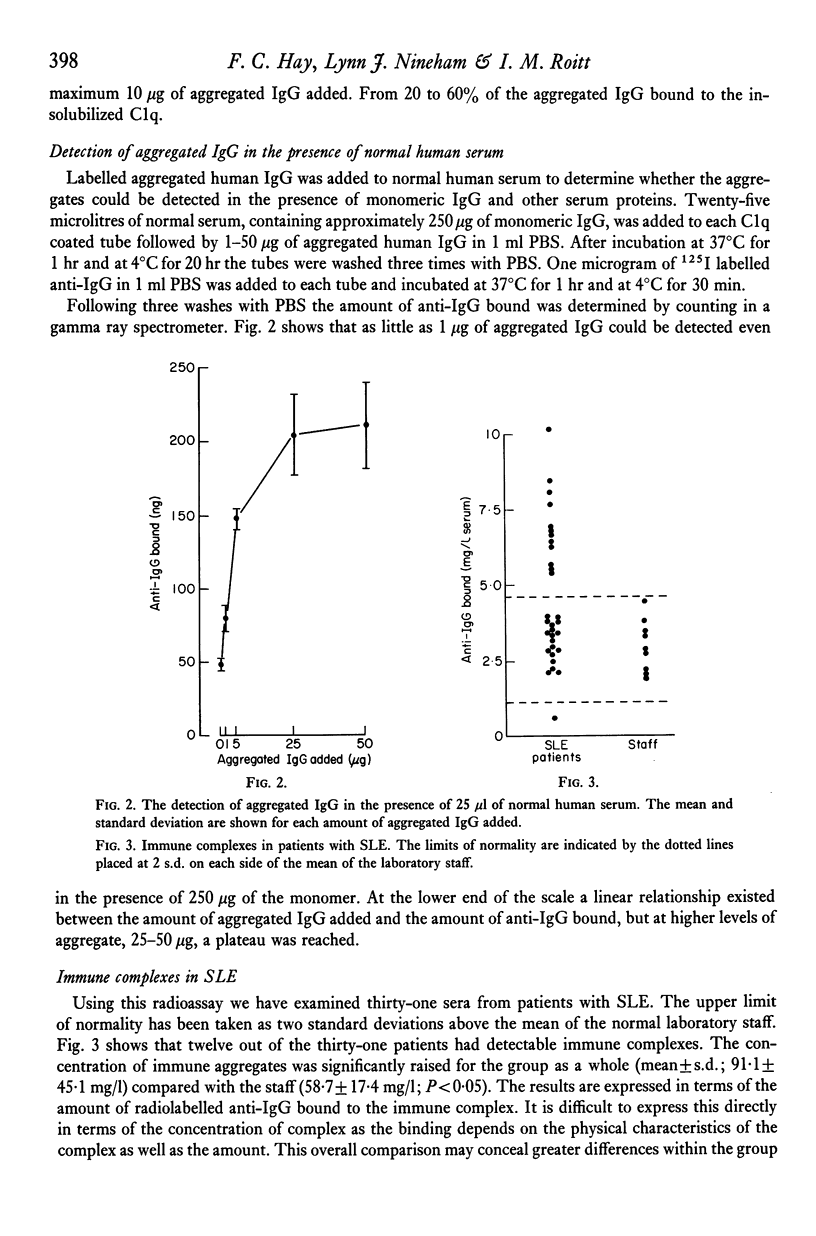
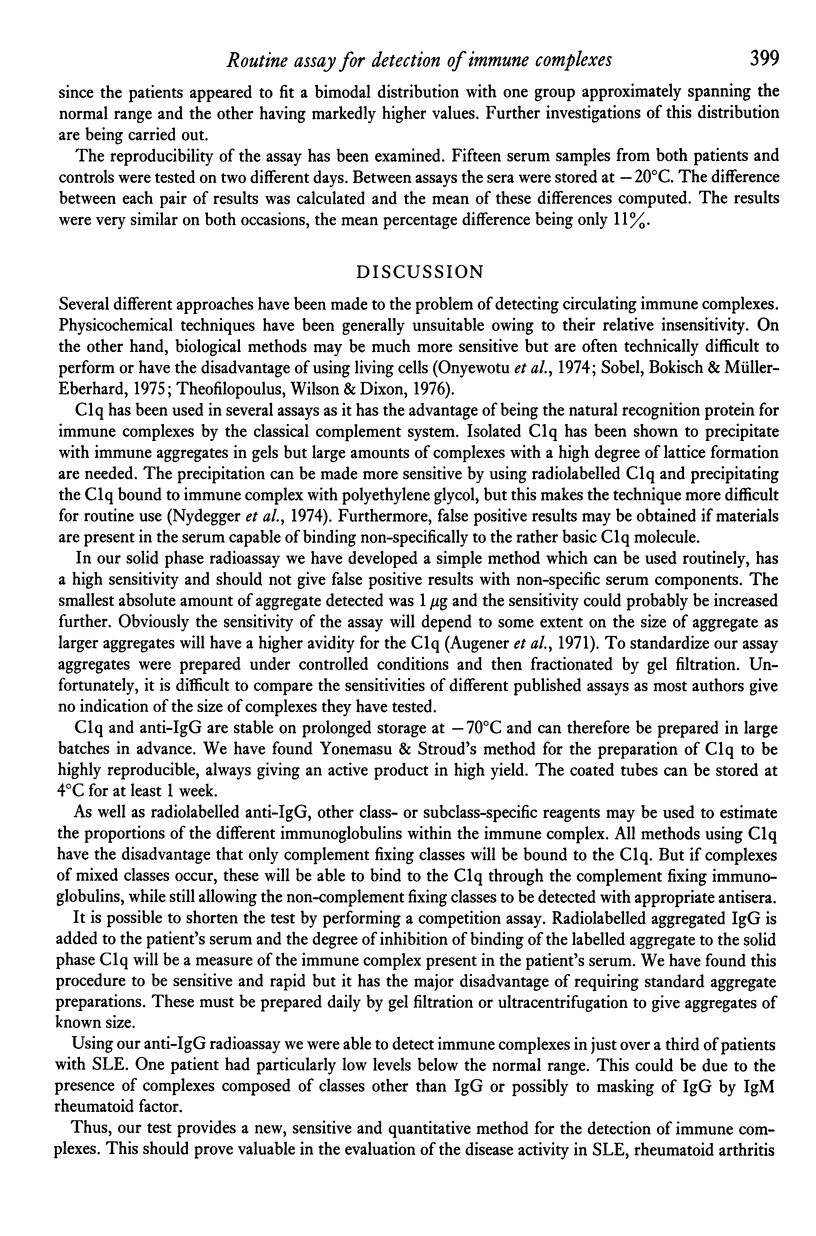
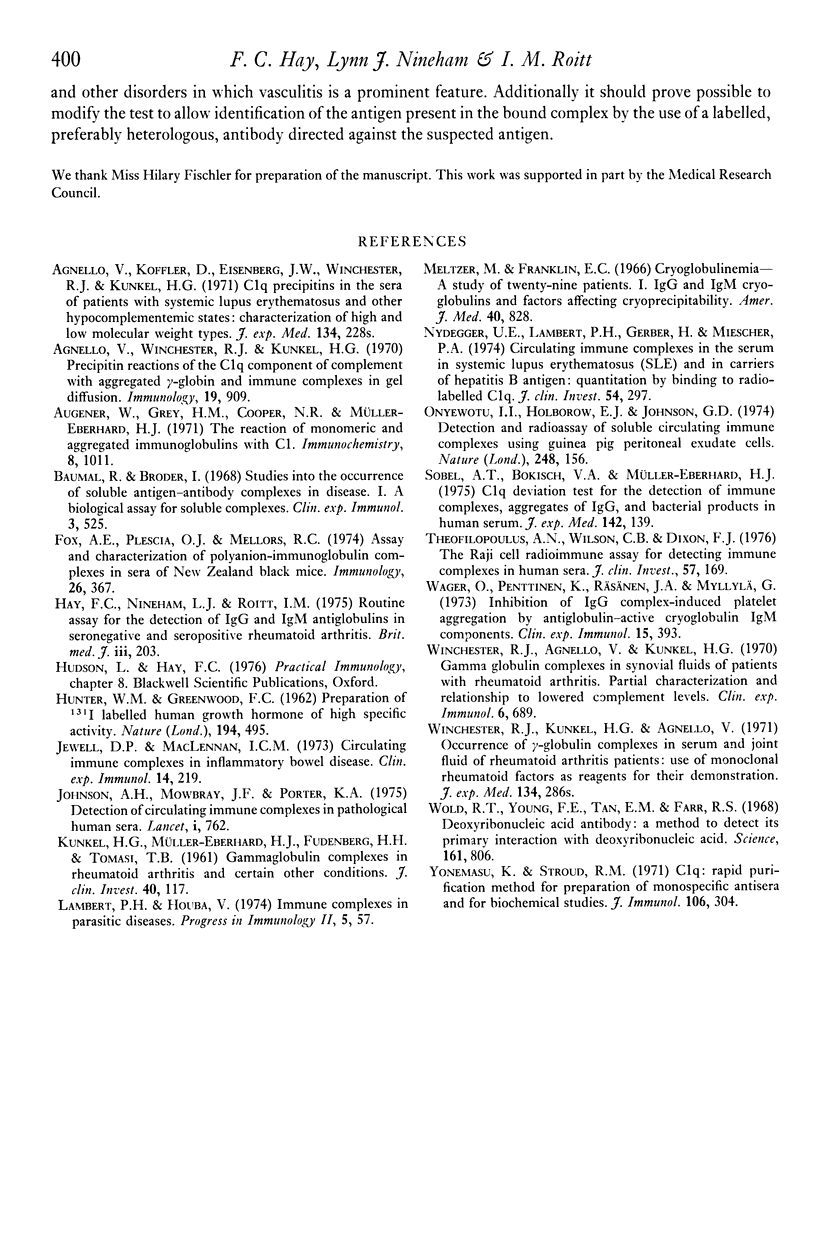
Selected References
These references are in PubMed. This may not be the complete list of references from this article.
- Agnello V., Koffler D., Eisenberg J. W., Winchester R. J., Kundel H. G. C1g precipitins in the sera of patients with systemic lupus erythematosus and other hypocomplementemic states: characterization of high and low molecular weight types. J Exp Med. 1971 Sep 1;134(3 Pt 2):228s–241s. [PubMed] [Google Scholar]
- Agnello V., Winchester R. J., Kunkel H. G. Precipitin reactions of the C1q component of complement with aggregated gamma-globulin and immune complexes in gel diffusion. Immunology. 1970 Dec;19(6):909–919. [PMC free article] [PubMed] [Google Scholar]
- Augener W., Grey H. M., Cooper N. R., Müller-Eberhard H. J. The reaction of monomeric and aggregated immunoglobulins with C1. Immunochemistry. 1971 Nov;8(11):1011–1020. doi: 10.1016/0019-2791(71)90489-7. [DOI] [PubMed] [Google Scholar]
- Baumal R., Broder I. Studies into the occurrence of soluble antigen--antibody complexes in disease. I. A biological assay for soluble complexes. Clin Exp Immunol. 1968 Jul;3(6):525–536. [PMC free article] [PubMed] [Google Scholar]
- Fox A. E., Plescia O. J., Mellors R. C. Assay and characterization of polyanion--immunoglobulin complexes in sera of New Zealand Black mice. Immunology. 1974 Feb;26(2):367–374. [PMC free article] [PubMed] [Google Scholar]
- HUNTER W. M., GREENWOOD F. C. Preparation of iodine-131 labelled human growth hormone of high specific activity. Nature. 1962 May 5;194:495–496. doi: 10.1038/194495a0. [DOI] [PubMed] [Google Scholar]
- Hay F. C., Nineham L. J., Roitt I. M. Routine assay for detection of IgG and IgM antiglobulins in seronegative and seropositive rheumatoid arthritis. Br Med J. 1975 Jul 26;3(5977):203–204. doi: 10.1136/bmj.3.5977.203. [DOI] [PMC free article] [PubMed] [Google Scholar]
- Jewell D. P., MacLennan I. C. Circulating immune complexes in inflammatory bowel disease. Clin Exp Immunol. 1973 Jun;14(2):219–226. [PMC free article] [PubMed] [Google Scholar]
- Johnson A. H., Mowbray J. F., Porter K. A. Detection of circulating immune complexes in pathological human sera. Lancet. 1975 Apr 5;1(7910):762–765. doi: 10.1016/s0140-6736(75)92433-2. [DOI] [PubMed] [Google Scholar]
- KUNKEL H. G., MULLER-EBERHARD H. J., FUDENBERG H. H., TOMASI T. B. Gamma globulin complexes in rheumatoid arthritis and certain other conditions. J Clin Invest. 1961 Jan;40:117–129. doi: 10.1172/JCI104224. [DOI] [PMC free article] [PubMed] [Google Scholar]
- Meltzer M., Franklin E. C. Cryoglobulinemia--a study of twenty-nine patients. I. IgG and IgM cryoglobulins and factors affecting cryoprecipitability. Am J Med. 1966 Jun;40(6):828–836. doi: 10.1016/0002-9343(66)90199-9. [DOI] [PubMed] [Google Scholar]
- Nydegger U. E., Lambert P. H., Gerber H., Miescher P. A. Circulating immune complexes in the serum in systemic lupus erythematosus and in carriers of hepatitis B antigen. Quantitation by binding to radiolabeled C1q. J Clin Invest. 1974 Aug;54(2):297–309. doi: 10.1172/JCI107765. [DOI] [PMC free article] [PubMed] [Google Scholar]
- Onyewotu I. I., Holborow E. J., Johnson G. D. Detection and radioassay of soluble circulating immune complexes using guinea pig peritoneal exudate cells. Nature. 1974 Mar 8;248(5444):156–159. doi: 10.1038/248156a0. [DOI] [PubMed] [Google Scholar]
- Sobel A. T., Bokisch V. A., Müller-Eberhard H. J. C1q deviation test for the detection of immune complexes, aggregates of IgG, and bacterial products in human serum. J Exp Med. 1975 Jul 1;142(1):139–150. doi: 10.1084/jem.142.1.139. [DOI] [PMC free article] [PubMed] [Google Scholar]
- Theofilopoulos A. N., Wilson C. B., Dixon F. J. The Raji cell radioimmune assay for detecting immune complexes in human sera. J Clin Invest. 1976 Jan;57(1):169–182. doi: 10.1172/JCI108257. [DOI] [PMC free article] [PubMed] [Google Scholar]
- Wager O., Penttinen K., Räsänen J. A., Myllylä G. Inhibition of IgG complex-induced platelet aggregation by antiglobulin-active cryoglobulin IgM components. Clin Exp Immunol. 1973 Nov;15(3):393–408. [PMC free article] [PubMed] [Google Scholar]
- Winchester R. J., Agnello V., Kunkel H. G. Gamma globulin complexes in synovial fluids of patients with rheumatoid arthritis. Partial characterization and relationship to lowered complement levels. Clin Exp Immunol. 1970 May;6(5):689–706. [PMC free article] [PubMed] [Google Scholar]
- Winchester R. J., Kunkel H. G., Agnello V. Occurrence of -globulin complexes in serum and joint fluid of rheumatoid arthritis patients: use of monoclonal rheumatoid factors as reagents for their demonstration. J Exp Med. 1971 Sep 1;134(3 Pt 2):286s–295s. [PubMed] [Google Scholar]
- Wold R. T., Young F. E., Tan E. M., Farr R. S. Deoxyribonucleic acid antibody: a method to detect its primary interaction with deoxyribonucleic acid. Science. 1968 Aug 23;161(3843):806–807. doi: 10.1126/science.161.3843.806. [DOI] [PubMed] [Google Scholar]
- Yonemasu K., Stroud R. M. Clq: rapid purification method for preparation of monospecific antisera and for biochemical studies. J Immunol. 1971 Feb;106(2):304–313. [PubMed] [Google Scholar]


